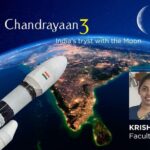Introduction
The Aditya L1 Mission, India’s pioneering space-based observatory, marks a significant milestone in the realm of space exploration and solar studies. In this blog, we’ll delve into the unique features of this mission and the advantages it offers for understanding the Sun’s complex behaviour.
Aditya L1 Mission Overview
Aditya L1 Mission is set to be India’s first space-based observatory dedicated to studying the Sun. To achieve its scientific objectives, this spacecraft will be positioned in a halo orbit around Lagrangian Point 1 (L1) of the Sun-Earth system. But what exactly is Lagrangian Point 1 (L1)?
Lagrangian Point 1 (L1)
Lagrangian Point 1, or L1, is one of five key points in the Earth-Sun system’s orbital plane. It is where the gravitational forces of Earth and the Sun perfectly balance the centripetal force required for a smaller object to remain in sync with them. The Aditya L1 spacecraft is set to be positioned at this unique vantage point to harness the benefits of reduced fuel consumption, enabling continuous and uninterrupted observations of the Sun.
The Launch Vehicle – PSLV Rocket
The mission will be propelled into space by the PSLV rocket, showcasing India’s technological prowess in space exploration.
The Primary Payload: Visible Line Emission Coronagraph (VLEC)
The heart of the Aditya L1 Mission is its primary payload, the Visible Line Emission Coronagraph (VLEC). This remarkable instrument, conceptualized and designed over 15 years, promises to revolutionize our understanding of the Sun. It will provide crucial data on the temperature, velocity, and density of the solar corona, shedding light on the processes responsible for heating this enigmatic region.
Advantages of L1 Placement
The decision to position the Aditya L1 spacecraft at Lagrangian Point 1 offers several advantages:
· Continuous Solar Observation: Unlike ground-based observatories that may experience occultations and eclipses, the Aditya L1 Mission enjoys a continuous view of the Sun.
· Uninterrupted Study of Solar Activities: This strategic positioning allows scientists to monitor solar activities without breaks, providing invaluable insights into the Sun’s behavior.
Scientific Objectives
The mission’s primary science objectives include:
· Understanding Coronal Heating and Solar Wind Acceleration: By studying the corona, Aditya L1 aims to unlock the secrets behind the heating of this outer solar layer and the acceleration of solar wind.
· Exploring Coronal Mass Ejections (CMEs) and Flares: The spacecraft will investigate the initiation of CMEs, flares, and near-Earth space weather, contributing to space weather prediction and mitigation.
· Solar Atmosphere Dynamics: Aditya L1 seeks to enhance our comprehension of the coupling and dynamics of the solar atmosphere, offering a more comprehensive view of our Sun’s behavior.
· Solar Wind Distribution and Temperature Anisotropy: The mission will provide data on the directional and energy anisotropy of solar wind through multi-directional observations.
Mission Uniqueness
The Aditya L1 Mission stands out in various ways:
· Near-UV Imaging: It will capture the first-ever spatially resolved solar disk in the near-ultraviolet band, enabling more detailed observations.
· CME Dynamics Close to the Solar Disk: Aditya L1 will offer critical insights into CME dynamics near the solar disk, providing a comprehensive understanding of these solar eruptions.
· On-Board Intelligence: Equipped with advanced technology, the spacecraft can autonomously detect CMEs and solar flares, ensuring timely data collection.
· Solar Wind Analysis: By analyzing the directional and energy anisotropy of solar wind, the mission will contribute significantly to our understanding of this crucial solar phenomenon.
Conclusion
In conclusion, the Aditya L1 Mission represents a giant leap for India in solar science and space exploration. With its cutting-edge technology and strategic placement at Lagrangian Point 1, it promises to unlock the secrets of the Sun, ultimately enhancing our understanding of space weather and the fundamental processes that govern our solar system.
To understand in detail of India’s lunar mission, Chandrayaan 3, click here
Join our official YouTube and Telegram channel for exclusive updates, valuable insights, and expert guidance on your journey to become a civil servant, especially if you aspire to join the prestigious IAS and IPS.
To kick start your career in civil services, enroll at the top civil service academy in Kerala, Amrita IAS Academy, and receive unparalleled support and preparation for UPSC examinations.

